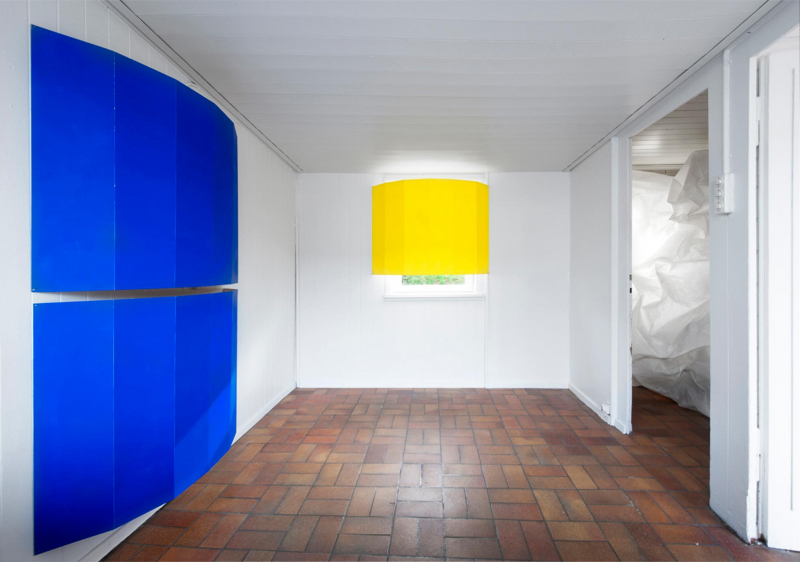
Bitte warten exhibition view, Artachment Basel, 2019/20
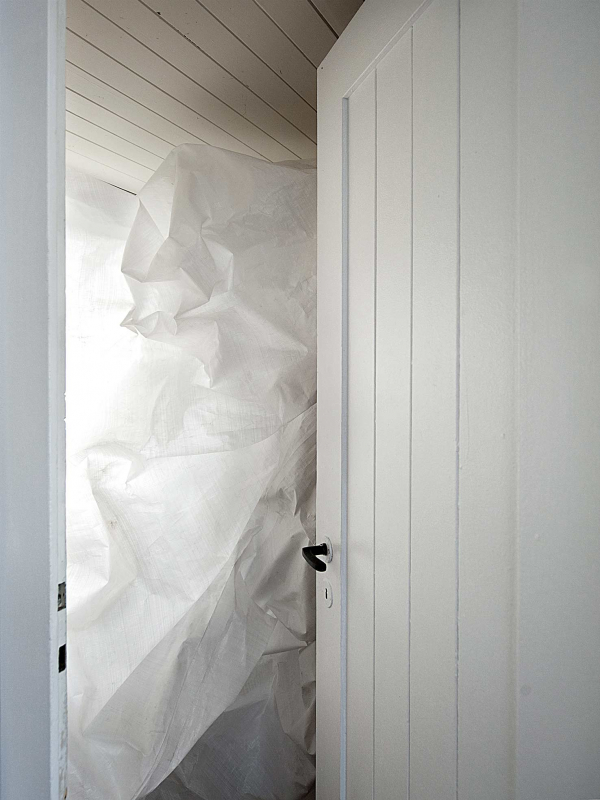
If you close the door PE - tarp and light, around 2 x 3 x 3.5 m, 2019
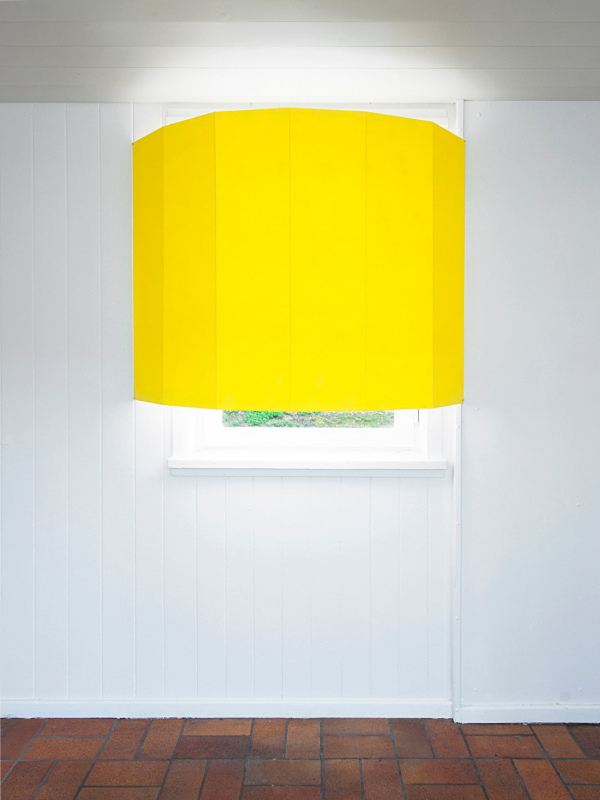
Bogen acrylic paint on cardboard, 80 x 105 x 35 cm, 2019
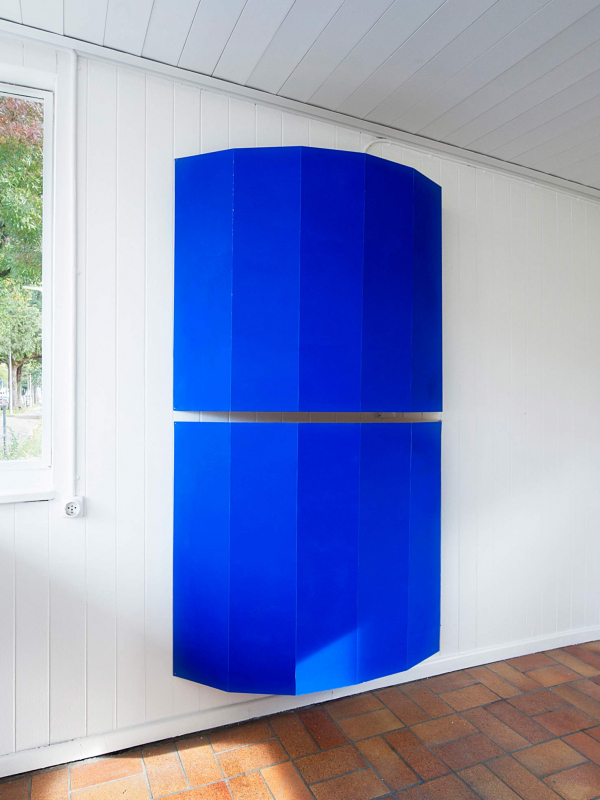
Doppelbogen acrylic on cardboard, 165 x 100 x 40 cm, 2019
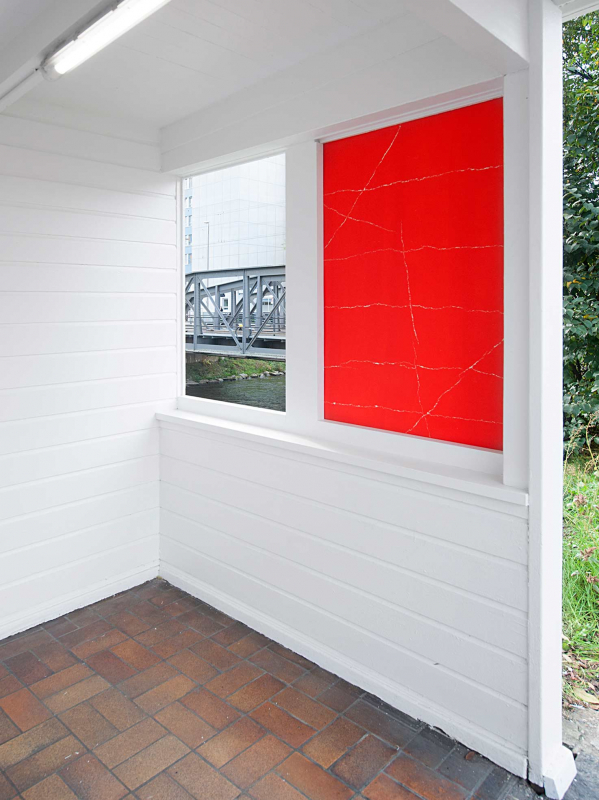
Risse A acrylic paint on cardboard, 120 x 78 cm, 2019
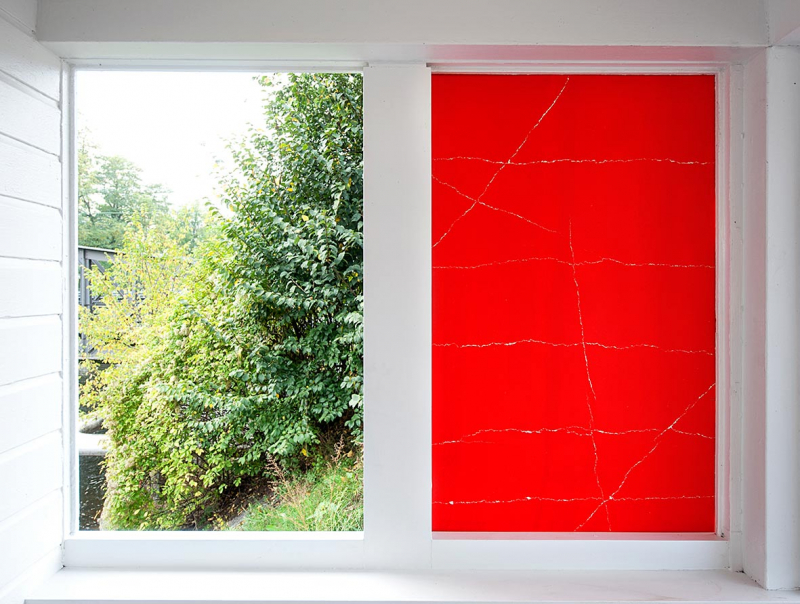
Risse A acrylic paint on cardboard, 120 x 78 cm, 2019
Bitte warten, 2019
Solo exhibition at Artachment Art Space Basel
Tashi Brauen’s objects and pictures aren’t meant for all eternity. Back in the studio from an exhibition, cardboard might get a second coat of paint. Then the previous shade might announce itself on the surface in soft shadows, or mix itself with the temperature of the new layer of acrylic. Tashi Brauen delights in materials and enjoys a nearly intimate relationship with paper. He tests its narrative potential by treating it with paint or damaging it just slightly. A crease, split or tear draws light, irregular veins into the red or blue ground. Cardboard jumps off the wall three times, forms half drums and, with cracked edges, evokes a notion of columns, lanterns, lampshades. And that’s where it happens: painting flirting with design and delivering a commentary on the environment and architecture. A piece of paper glued to the surface becomes a threshold, its micro-edge casts a dark, narrow shadow onto a monochrome surface. Doesn’t a landscape have its beginnings in such a minimal gradation?
Tashi Brauen started in photography. He photographed three-dimensional paper objects, which were often determined by right angles, and arranged them in front of a homogeneous ground in such a way that they seemed to float, even fly. His photographic eye absorbed every corporal-resistant presence in order to merge it into geometric compositions. Even his Xerox prints of exhibition views are so saturated with royal blue that light and dark lose their perspective readability and open up to abstraction as pure surface values: the space retains an inkling of night. Reluctant to venture into documentation, he also grew weary of having to deal with their highly sensitive surfaces.
In many cases, minimalism or concrete art is called to mind in his experimental arrangements. But unlike the generation whose images explored the laws of space, light and balance, here a somewhat unconstrained experimentalist is at work. Some features are already present in the available Finn cardboard as delivered. The rollers leave traces, and paint comes out of the tube as it is. The absolute is far removed from his probing gaze, his object is in close contact with chance, interaction with other artists suits Tashi Brauen’s work. The fact that a blue surface, framed by thin rivulets formed by the tracks left by tears, comes to lie on the floor is no longer a test of courage (nor is it an ingratiation with the blue Joan Miró underlays his linear specters). Tashi Brauen plays more with the possibilities of staging than with the rejection of historical painting: art has become mobile, it recognizes emptiness without evoking something sinister. It is allowed to be staffage and scenery. It narrates its own origins and also contradicts the expectations of durability and the impression of high value. Painting isn’t dead. The image is, at most, just taking a little time away from the burden of its traditions as it refocuses on its elements.
Text: Isabel Zürcher